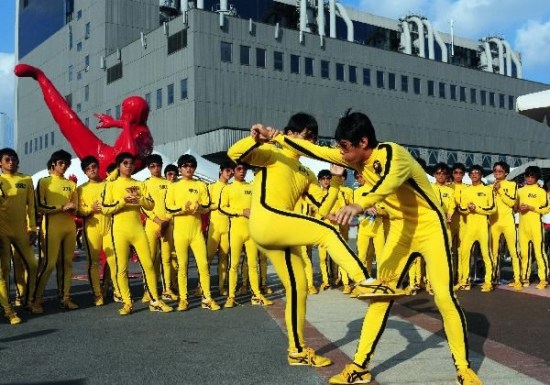
Fans of legendary kung fu movie star Bruce Lee perform in the World Expo Park in Shanghai, east China. /Xinhua Photo
A global calling card of China: Kung fu
Of those films that perform reasonably well overseas, kung fu genre movies definitely rule. This year's Ugandan film “Bruce U” inspired by legendary Bruce Lee, had taken the country's box office by storm. Also evidently, one of the most commercially successful Chinese films overseas is “Crouching Tiger, Hidden Dragon,” with 128 million US dollars in box-office receipts from the North American region alone.
The kung fu movies have succeeded in breaking down national, cultural, and linguistic barriers as well. For example, the animated movie franchise "Kung Fu Panda" harmoniously bringing the Chinese cultural setting to the tune of American humor, has delivered universal entertainment over the past 10 years.
But Chinese kung fu is more than the "action-packed" portrayal seen in movies ? it has penetrated into people’s daily lives. As one of the earliest and longest lasting sports, kung fu is different from boxing or weapon skills and some sighting stunts as it advocates virtue and peace, instead of aggression and violence.
Just as Bruce Lee said, “Kung fu is practiced not just to smash stones or wood boards, but to have an impact on our thinking and way of life.” Kung fu styles including Shaolin, Tai Chi, and Qigong have many followers worldwide.
The 7th World Kungfu Championship was held in early November in the city of Emeishan in southwest China's Sichuan Province, with more than 2,400 Chinese and 1,400 overseas competitors from 56 countries and regions, joining into the annual "Martial Arts Olympics."
Thanks to Bruce Lee, Chinese Kung fu nowadays has been enjoying a drastic increase in popularity worldwide riding upon the wave of Chinese culture craze.


















































